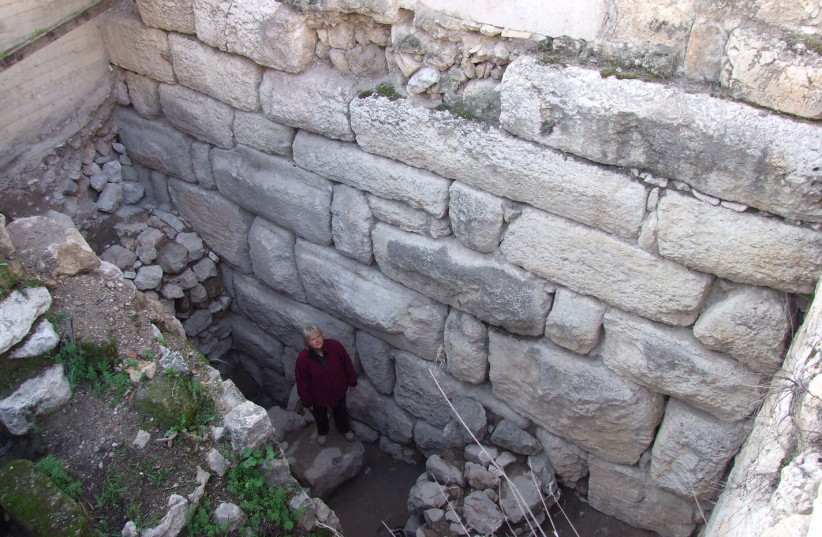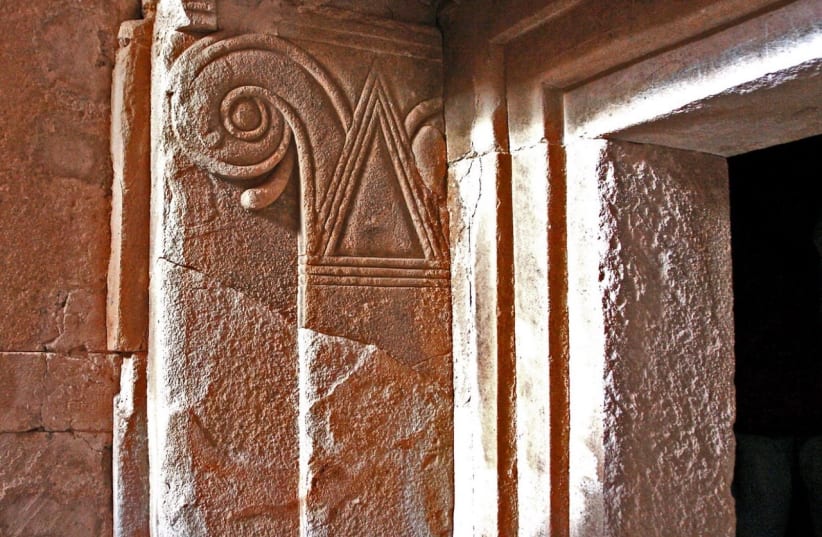Some 3,000 years ago, buildings in the Kingdom of Judah presented decorations and features that characterized royal architecture in the region between the 10th and the sixth centuries BCE, such as recessed doors, rectangular roof beams and volute capitals.
Recessed doors, ashlar stone masonries, volute (proto-Aeolic) capitals, window balustrades and decorated bases from the period have been found in structures in the Levant and beyond, Hebrew University of Jerusalem archaeologists Madeleine Mumcuoglu and Yosef Garfinkel wrote in a recent paper published in the new journal Jerusalem Journal of Archaeology.
In three out of six cases, the examples found in sites in Judah are the earliest ever uncovered.
As Garfinkel pointed out, the research offers further support to the notion that Judah was already a kingdom at the time of David and Solomon as the biblical text suggests, a notion that for years has been disputed by several scholars.
“There has been a big debate among archaeologists about what we know on the Kingdom of Judah in the 10th century BC,” Garfinkel said. “The main problem is Jerusalem: Jerusalem was the capital, and one would have expected palaces and temples and clear architectural features emphasizing the power of David and Solomon, but we do not have clear archaeological remains in Jerusalem from that period.”


According to the expert, there are many reasons for this lack of evidence, and specifically the fact that between the 10th and the sixth centuries the city was never destroyed but, rather, was built and expanded. This makes it very difficult to identify remains from a specific moment, compared with other sites where clear layers from different time periods and occupations are clearly visible and distinct.
“For a long time, there was no fresh data from the area dating to the 10th century, so it appeared that those who argued that Judah was not a kingdom were right, but our excavations in Khirbet Qeiyafa brought about a revolution,” Garfinkel said.
Uncovered in 2007, Khirbet Qeiyafa is located some 30 km. southwest of Jerusalem and presents the remains from a fortified city dating back to the early 10th century BCE, the time of David and Solomon. No such ancient fortified structure had ever been identified in Judah.
The paper analyzed the different architectural elements uncovered at Khirbet Qeiyafa and compared them with similar remains from other sites.
“We documented six aspects of royal architecture, and we surveyed where they appeared for the first time,” Garfinkel said.
A limestone portable shrine, featuring a recessed door frame and rectangular roof beams, was found in a cultic room in Khirbet Qeiyafa.
Recessed door and window frames were common in royal and religious buildings in Mesopotamia as early as the fifth millennium, and were also depicted in artwork. During the second millennium BCE, they were later found in palaces, including in Turkey, Cyprus and Syria.
Depictions of rectangular wooden beams are found in the tombs of the Persian kings in Persepolis.
In addition, Khirbet Qeiyafa presented a finely dressed ashlar masonry at its western gate. Similar decorations were found also in other sites in Israel and in Cyprus.
In the case of these three elements, the artifacts uncovered at Khirbet Qeiyafa are the earliest examples found in the region.
Volute capitals, window balustrades and decorated bases also appear in several sites around Israel and the Levant starting from the ninth century BCE.
“A kingdom is not something abstract; a kingdom is based on elements like borders, a center and a periphery, roads, a network for tax collection and so on,” Garfinkel said. “However, another characteristic of a kingdom is its social hierarchy as demonstrated by the presence of palaces and temples.
“Throughout history and to this day, people have used architecture to emphasize power,” he further remarked. “Based on the findings in Khirbet Qeiyafa, we can see urbanism and the construction of fortified cities in Judah already in the 10th century BC.”
